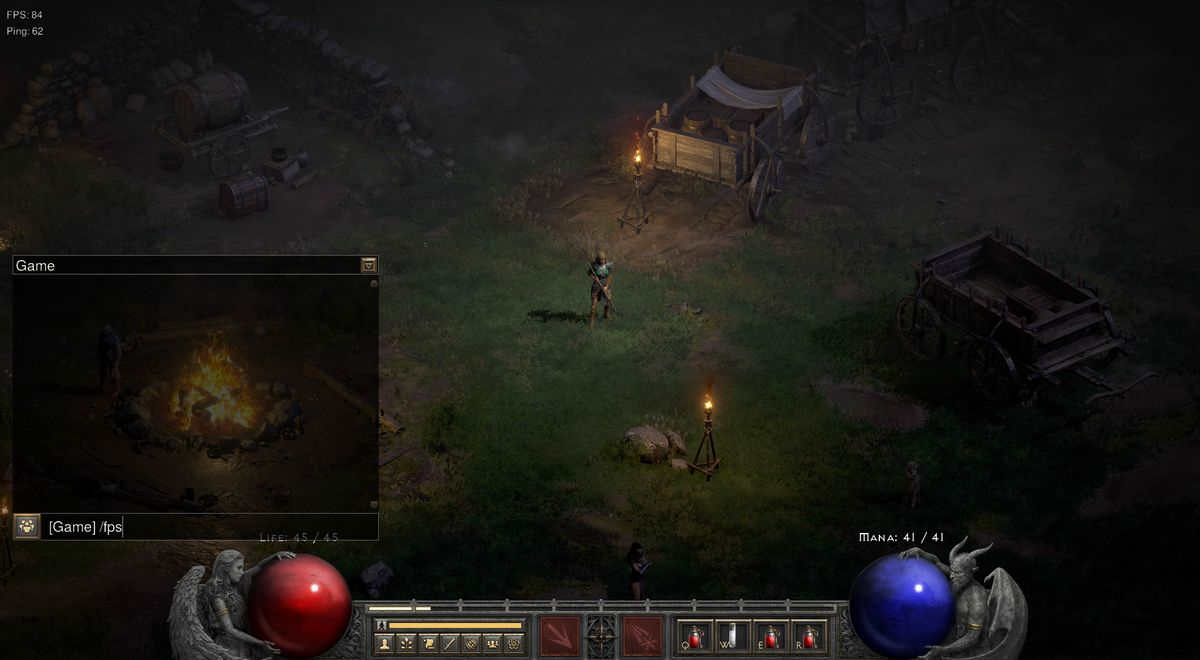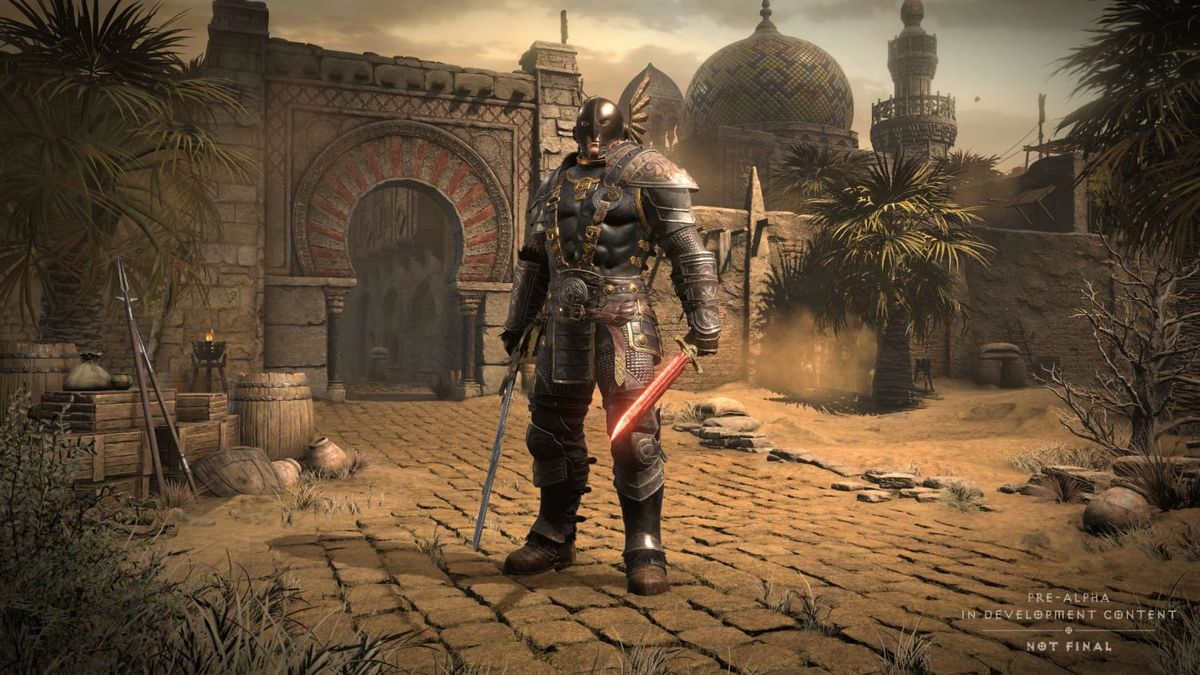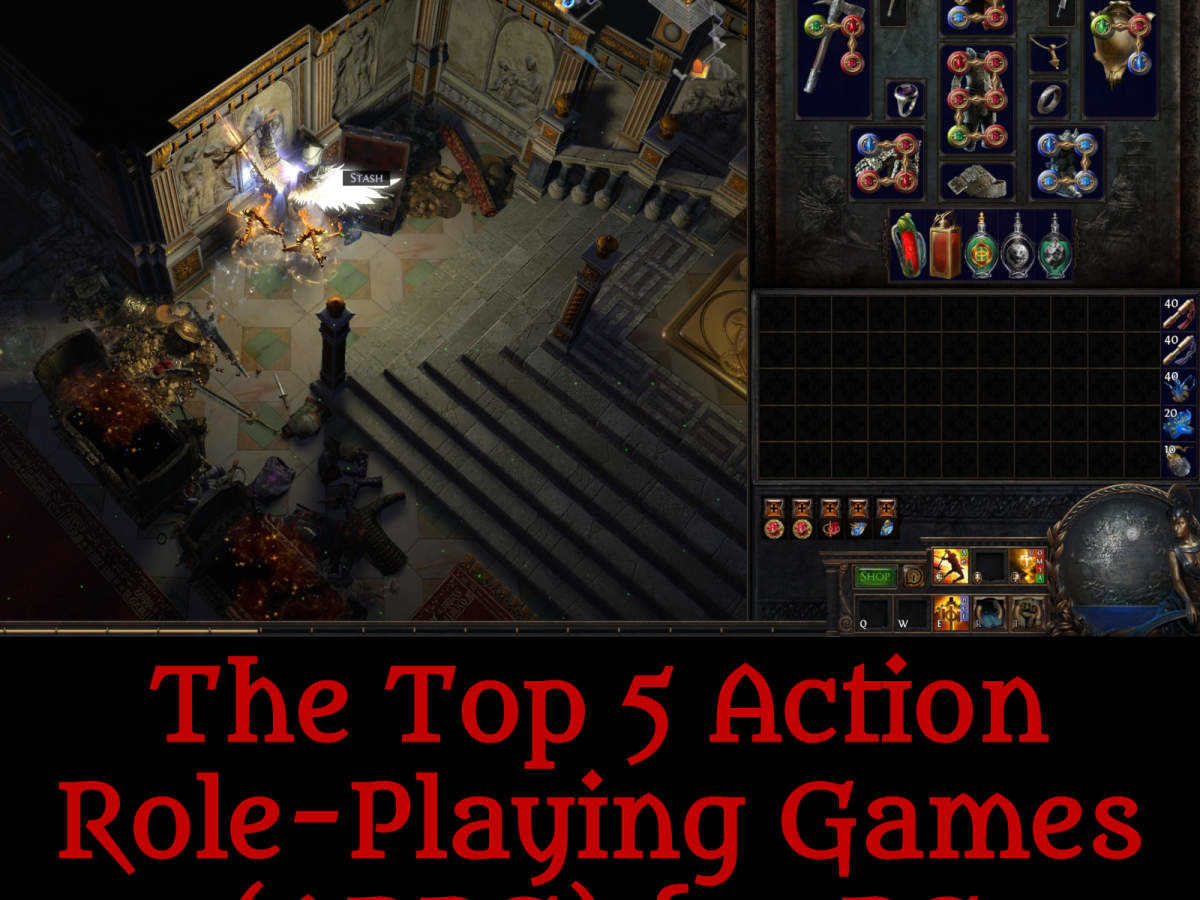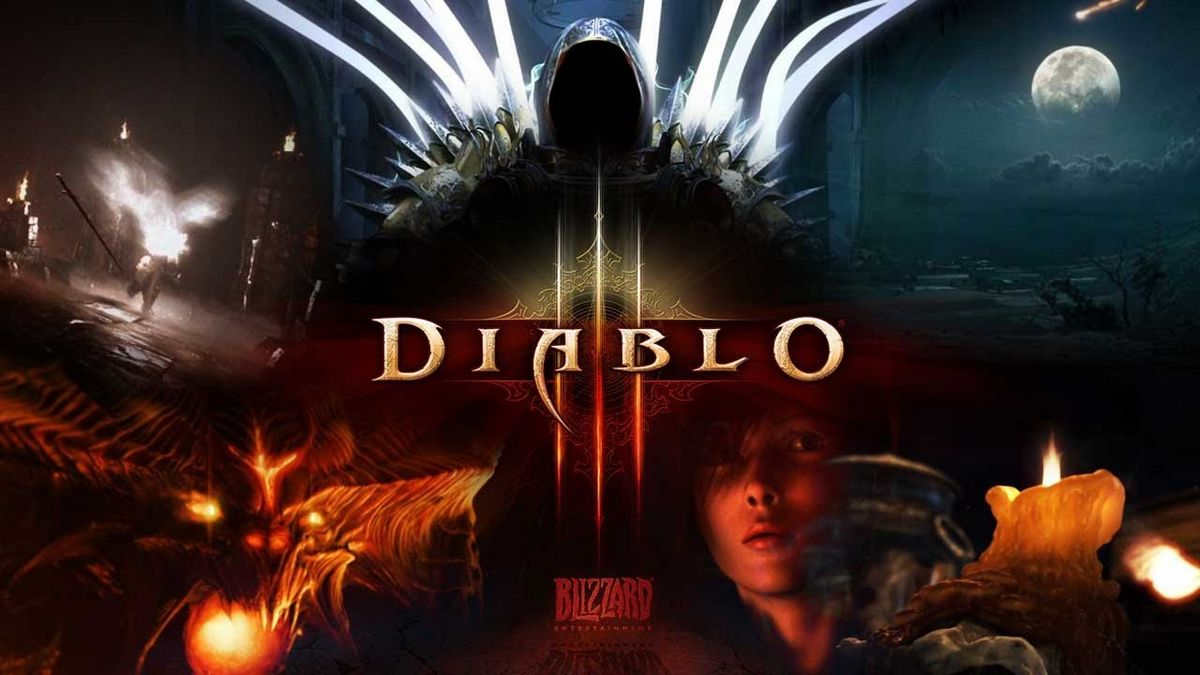Diablo II is a legendary Action Role Playing Game (ARPG) that has captivated players for over two decades. Developed by Blizzard Entertainment and released in 2000, Diablo II quickly became one of the most popular video games of all time with its immersive storyline, engaging gameplay mechanics, and stunning graphics. The game’s dark atmosphere and intense battles against hordes of demonic creatures have made it an unforgettable experience for gamers worldwide. In this article, we will explore the intricacies of Diablo II: its history, gameplay features, character classes, multiplayer modes and more. Whether you are a long-time fan or new to the game world altogether, come with us on a journey through Sanctuary as we delve into the depths of Diablo II.
- The Development and Evolution of Diablo II: A Comprehensive Overview
- Understanding the Mechanics Behind Diablo II’s Skill Trees
- Analyzing the Significance of Diablo II’s Runes and Rune Words
- The Role of Questing in Advancing Game Play in Diablo II
- Exploring the Role of Multiplayer Mode in Enjoying Diablo II as a Social Experience
- An In-Depth Look at the Seven Character Classes in Diablo II and Their Unique Traits
- Examining the Economic System Within Diablo II’s Marketplace
- Strategies for Playing Through Hell Difficulty Mode on Single Player or Co-op
The Development and Evolution of Diablo II: A Comprehensive Overview
It follows the story of the player’s character as they battle their way through hordes of demons and monsters to defeat Diablo, the Lord of Terror. The game’s development was driven by a desire to improve upon its predecessor, Diablo I, which had been released in 1996.
One of the key improvements made in Diablo II was the addition of new character classes with unique abilities and skills. This included the Amazon, Barbarian, Necromancer, Paladin and Sorceress classes. Each class offered players distinct gameplay options and playstyles that were not available in its predecessor.
Another significant improvement made during Diablo II’s development was an overhaul of the game engine itself. This resulted in significantly improved graphics quality compared to its predecessor while still maintaining similar gameplay mechanics. Additionally, Blizzard North implemented various multiplayer features such as online matchmaking capabilities and enhanced co-op play for up to eight players.
The evolution of Diablo II continued even after its release thanks to numerous patches that fixed bugs while introducing new content items like expansion packs featuring additional levels challenges including more complex boss fights with updated loot drops system making it easier for players advance their characters further than ever before possible within this beloved classic game genre niche at it’s finest!
Understanding the Mechanics Behind Diablo II’s Skill Trees
The game features three character classes: Amazon, Necromancer, and Paladin. Each class has its unique tree with different skills to learn.
The mechanics behind Diablo II’s skill trees are straightforward. Players earn Skill Points as they level up or complete quests that can be used to unlock new abilities in their respective skill tree. Skills range from offensive attacks to defensive buffs and passive effects that boost a player’s stats.
To make the most out of these skills, players need to understand how each ability interacts with other skills in the same tree or across different classes’ trees. For instance, certain combinations of Amazon and Paladin’s abilities work well together when building hybrid characters.

Lastly, it is worth noting that while Diablo II offers an open-ended progression system by letting players develop whatever combination of skills they prefer; careful planning and strategic thinking can go a long way in ensuring success during battles against tough bosses or enemy hordes alike.
Analyzing the Significance of Diablo II’s Runes and Rune Words
The game’s success can be attributed to its immersive gameplay and various features that set it apart from other games of its time. One such feature is Diablo II’s runes and rune words system.
Runes are small, magical stones with different properties that can be inserted into weapons and armor to imbue them with unique abilities or enhance existing ones. Rune words are powerful combinations of specific runes arranged in a particular order which grants even more considerable enhancements to equipment stats.
The significance of Diablo II’s runewords lies in their potential for customization and diversity within the game. Players could create their own personalized items by combining different runes in various orders. It added an entirely new dimension to character-building by enabling players to tailor their playstyle according to their preferences.
Moreover, acquiring runes was not an easy feat – rare drops or trading were required for access making each rune special on its own due to rarity levels; thus emphasizing how crucially important they were when creating a word combination build.
In conclusion, the use of Runes and Rune Words gave Diablo II’s players endless possibilities for customizing builds while adding a layer of complexity during gameplay that kept fans engaged throughout years after release date. It may have been released over two decades ago but remains relevant today thanks largely because these innovative mechanics helped revolutionize RPG gaming at large through deepening immersion through player choice-driven experiences!
The Role of Questing in Advancing Game Play in Diablo II
Quests provide players with a sense of direction and purpose, giving them specific goals to achieve as they progress through the game. Completing quests also rewards players with experience points, gold, and powerful items that can significantly enhance their character’s abilities.
Furthermore, quests often require players to explore new areas and face tougher enemies than those found in standard gameplay. This adds an extra layer of challenge for experienced players who may find normal gameplay too easy. Additionally, some quests have multiple outcomes depending on the player’s choices or actions during the quest. This creates a sense of agency for players and allows them to shape their own story within the game.
Overall, questing plays a vital role in providing structure and progression within Diablo II while also offering additional challenges and opportunities for character growth. For these reasons, it remains one of the most important aspects of this classic RPG decades after its initial release.
Exploring the Role of Multiplayer Mode in Enjoying Diablo II as a Social Experience
Multiplayer gaming is an excellent way of enhancing the social experience by engaging players in team-based gameplay that fosters communication, cooperation, and teamwork.
The role of multiplayer mode in Diablo II is crucial because it allows players to explore a vast world filled with other gamers who share their passion. Players can connect with each other through various channels such as voice chat or messaging systems. These interactions enable them to collaborate on quests and form alliances against common enemies.
Moreover, Diablo II offers several different types of multiplayer modes that cater to varying player preferences. These include cooperative play, where teammates work together towards a common goal; player versus player (PVP), which pits players against each other in battle; and ladder competition where participants compete head-to-head for high scores.
Overall, exploring the role of multiplayer mode in enjoying Diablo II as a social experience demonstrates how significant this function is for creating enjoyable games that connect people from all over the world. It enables like-minded fans to come together on one platform and enjoy immersive gameplay while fostering new friendships along the way. Therefore if you are looking for an exciting action-packed adventure full of twists turns and social engagements then look no further than Diablo II’s iconic multiplayer modes!
An In-Depth Look at the Seven Character Classes in Diablo II and Their Unique Traits
Each class had its unique set of traits, abilities and playstyle that players could choose from to enter the world of Diablo II. The seven classes were Amazon, Assassin, Barbarian, Druid, Necromancer, Paladin and Sorceress.
The Amazon was an agile ranged fighter who wielded spears or bows with deadly precision. They could summon valkyries and other animal companions to aid them in battle while also using javelins for close combat attacks. Assassins were expert martial artists capable of performing lightning-fast moves with their claws or katars. Their shadow clones allowed them to deceive adversaries while elemental traps weakened foes before they could get close.
Barbarians were fearless melee fighters who used brute force to strike down enemies with axes or swords. Their ability to dual-wield weapons gave them a distinct edge on the battlefield, especially when combined with numerous crowd-control skills such as war cries or taunts that drew enemy attention away from allies. Druids utilized nature magic alongside shape-shifting powers that transformed them into either ferocious beasts or powerful elementals depending on the situation at hand.

Necromancers summoned undead minions and cast curses upon their enemies causing fear and vulnerability effects across groups of opponents simultaneously. Paladins served as holy knights wielding hammers or scepters infused with divine energy capable of healing allies as well as banishing evil demons back into Hell itself! Lastly came sorceresses whose mastery over fire-, ice-, and lightning-based spells made them formidable glass cannons able decimate entire hordes en masse!

In conclusion each class in Diablo II offered a unique experience for players allowing them freedom to experiment based on personal preferences providing endless replayability value within one game alone!
Examining the Economic System Within Diablo II’s Marketplace
Examining the economy of this game can provide valuable insights into real-world economics, particularly in terms of how market participants behave under different conditions.
One important aspect to consider in Diablo II’s economy is the role played by scarcity. Scarcity refers to the limited availability of certain goods or services that creates competition among buyers who are willing to pay more for these items. In this game, players often compete for rare weapons or armor pieces that offer significant advantages over other available options. Thus, sellers can charge higher prices for these items knowing that there will always be some players willing to buy them at any cost.
Another factor influencing the economy within Diablo II’s marketplace is asymmetrical information. Asymmetry occurs when one party has more knowledge about a product than another party. This could happen in many ways – hidden stats on an item or a player selling an item without revealing its true value – leading to price disparities between knowledgeable and unknowledgeable participants.
Overall, examining the economic system within Diablo II provides us with fascinating insights into how markets work generally speaking while providing fun gameplay experiences for video gamers around the world!
Strategies for Playing Through Hell Difficulty Mode on Single Player or Co-op
To succeed, it is crucial to develop solid strategies that take advantage of the unique strengths and weaknesses of your character class.
For example, if you are playing as a Necromancer in single player mode, it is important to focus on summoning skills such as Skeleton Mastery and Raise Skeletal Mage. These minions will provide valuable support during battles while keeping enemies distracted from attacking you directly. Additionally, investing points in Corpse Explosion allows for massive damage against groups of enemies.
In co-op mode, communication between team members is key. Players should coordinate their builds so that each member fulfills a specific role such as tanking or support. It is also important to identify which party member has the strongest gear and allow them to lead the charge during difficult encounters.
Regardless of whether you are playing solo or with friends, it is essential to have a solid understanding of enemy types and their vulnerabilities. For instance, certain monsters may be resistant to fire damage but weak against cold attacks. Knowing this information can make all the difference in tough combat situations.

With these strategies in mind, players can overcome even the most difficult challenges presented by Diablo II’s Hell difficulty mode.
In conclusion, Diablo II is an iconic game that has set a high standard in the world of role-playing games. The intricate storyline, immersive gameplay, and challenging difficulty level have made it a popular choice for gamers even after two decades of its launch. Its unique blend of hack-and-slash gameplay with RPG elements has inspired many other gaming franchises.
The game’s success can also be attributed to its attention to detail in terms of character customization and item collection systems. It allows players to experiment with different builds while providing ample opportunities for loot hunting.
Furthermore, the expansion packs added new content to the already-rich base game experience. With new classes, areas, and mechanics, they kept the fanbase engaged for years after release.
Diablo II’s lasting legacy is evident from its continued popularity among fans who still play it today on modern platforms or through emulation software. The game remains a prime example of how well-crafted storytelling combined with engaging gameplay can create an unforgettable gaming experience that stands the test of time.
Read More:- Discover the Magic of Rune Factory Frontier: A Guide to the Ultimate Gaming Experience!.
- Unleash the Power of Diablo: A Guide to Conquer the Dark World!.
- Unleash Your Inner Hero in Neverwinter Nights: Hordes of the Underdark – A Thrilling Adventure awaits!.
- Get Ready to Conquer the Seven Sorrows in Gauntlet – The Ultimate Multiplayer Action Game!.
- Discover the Best Tips and Tricks for Playing Pokemon Platinum Version – Your Ultimate Guide!.
- Unleash Your Inner Adventurer with Torchlight II – the Ultimate Game Experience!.
- Experience the New Era of Final Fantasy XIV with Stormblood: A Thrilling Journey | 70 Characters.